So, you’re wondering what Japandi style actually means... Well, you’ve come to the right place! With the help of interiors experts, we will explain what this beautiful style is all about, where it comes from and how you can enjoy it in your own home.
From Japandi’s long history, its deep respect for all things natural and its love for craftmanship, this micro trend is all about quality and simplicity. As well as this, its passion for all things "hygge" and "wabi-sabi", its calming neutral colours and much more, this stylish trend looks so simple to achieve, but a lot of thought and care goes into every single decor item. If you can't wait to find out more about the trend that everyone is crazy about, read on...
What is Japandi?
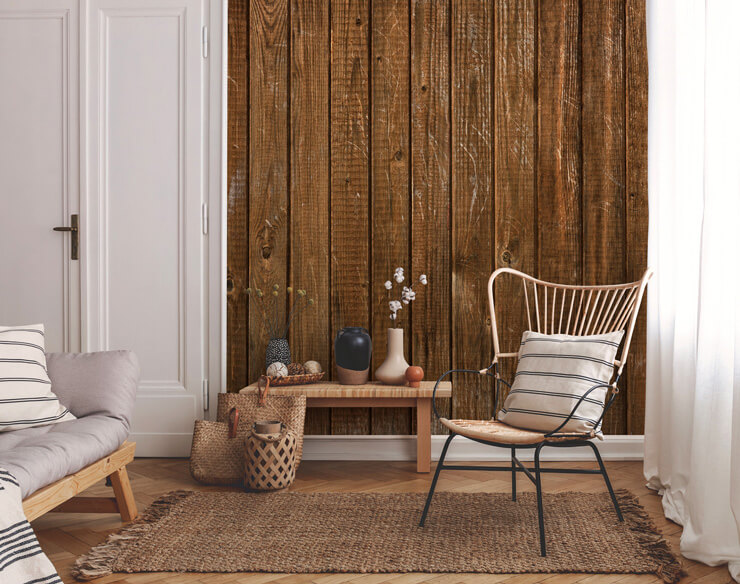
Mural in photo: Wood Texture Natural Finish
The term Japandi, also known as Japanese minimalism, is a beautiful blend of two cultures: Japanese and Scandinavian. Both have an appreciation for nature, craftsmanship and functionality, as well as neutral tones, clean lines and uncluttered spaces. Although many think that this micro trend is fairly new, it is believed to have begun many years ago. Aaron Cambden from Fairview Estates, explains more.
‘Some may argue that this style could be dated back over 150 years ago to when Danish designers, artists and architects travelled to Japan seeking new inspiration.’
Japanese is a blend of two notions: the Scandi ‘hygge’ (cosiness and homeliness) and Japanese ‘wabi-sabi’ (imperfect beauty). It’s a beautiful cocktail of style and stress-free atmosphere. Perfect for anyone who leads a hectic, modern lifestyle and needs a break from work and social media.
Ready for more? Then read on to find out how to achieve Japandi style in your own home.
A need for functional Japandi furniture with clean lines
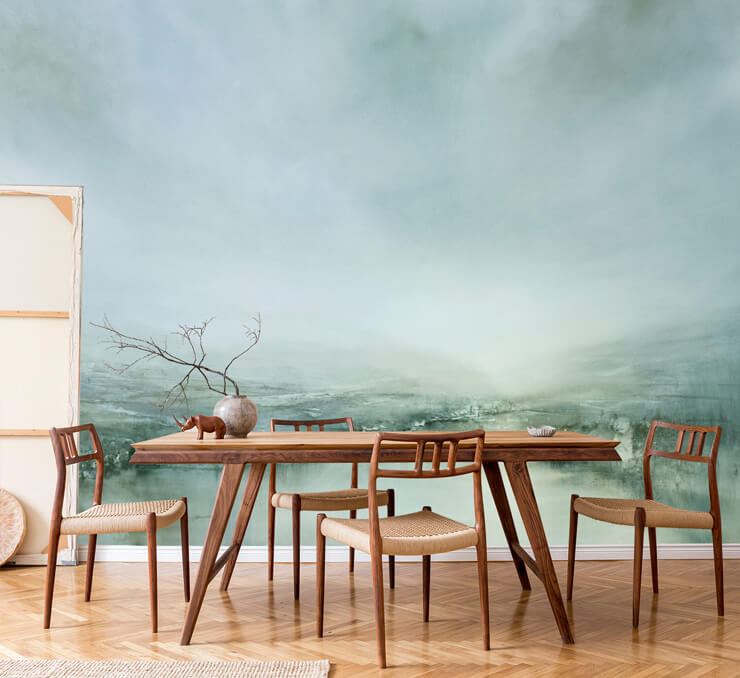
Mural in photo: Morning Dew
Furniture and décor are so important when you are creating a certain mood or style in a room, whether a Japandi living room, bedroom or dining room! That’s why it’s crucial to blend these two cultures together if you want to achieve the perfect Japandi look. Andrew Baker, Founder of HomeownerCosts, tells us the two most important design traits to factor in when choosing your furniture.
‘The Nordic style focuses on light shades, while the Japanese enjoy darker shades. However, both feature functionality and clean lines. Make sure to mix and match furniture from both styles... You shouldn’t hesitate in choosing different shades and shapes.’
We suggest you only buy functional and simple items that are beautiful in their own right. Treat every piece of furniture like it is a sculpture. Helen White, Interior Designer and Co-Founder of houseof, explains this perfectly.
‘When trying to recreate this calming trend, go for a less is more approach and choose iconic pieces, giving each item a space to breathe. Think art gallery over thrift shop.’
A need for calming minimalist, Japandi design
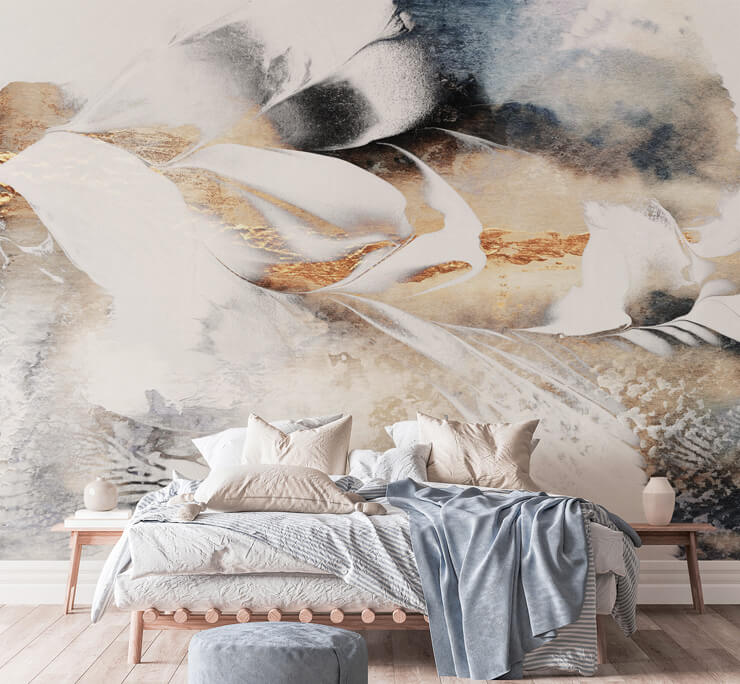
Mural in photo: Soothe Your Soul
An important factor to remember with Japandi interiors is minimalism like in this Japandi bedroom. Make sure you only have functional items and remove that unnecessary clutter. See through your minimal filter and start the decluttering process now. If you have children or your household is very active, choose sensible storage such as baskets and cabinets. Use folding screens to stay organised as well as create a clutter-free environment. Wicker or hessian baskets are ideal: not only are they functional but they have a natural, Japandi look which is what we are striving for.
A passion for handmade craftmanship
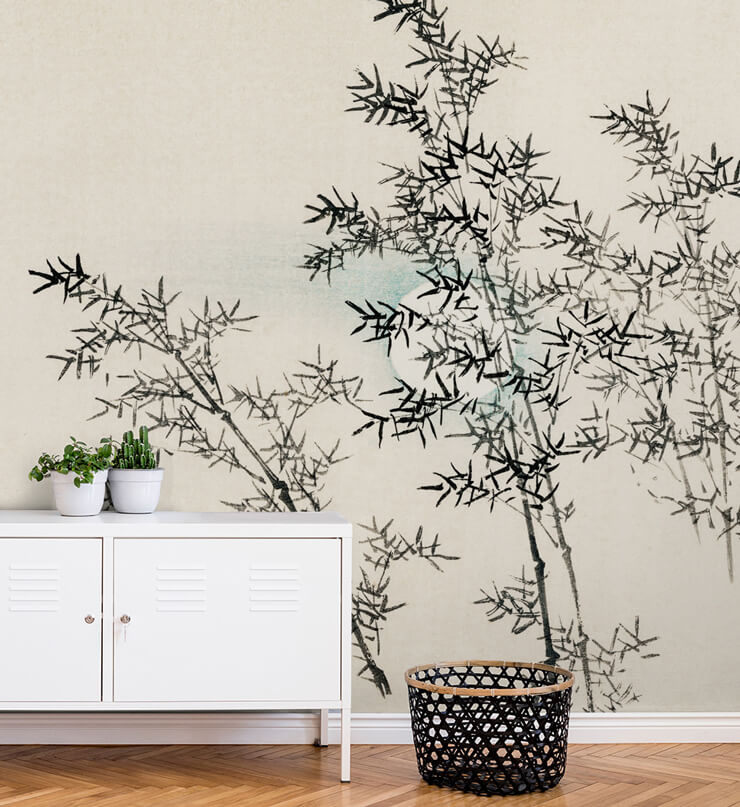
Mural in photo: Bamboo
First of all, both cultures appreciate the beauty of crafted furniture that is lovingly and expertly made by hand. They both follow a culture of sustainability and 'if it’s broken fix it’ culture, so don’t just throw things away. That's also where the respect for high-quality items come from. It’s so important to choose timeless furniture that is made to last – not to be thrown away when the next trend comes along.
Japandi style = An appreciation for imperfect beauty
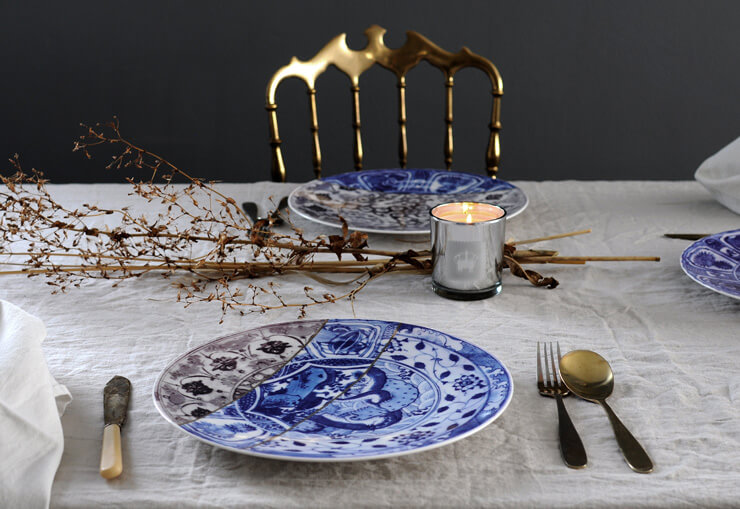
Image source: Mineheart
Scandinavian design is highly focused on functionality and cosiness. However, Japandi follows one of Japanese design’s elements very closely – wabi-sabi. Wabi-sabi is a love for imperfect beauty. Again it refers back to the love for mending broken items instead of buying new ones.
‘Japanese design loves handmade and natural imperfection. One great example is the kintsugi; the art of repairing broken objects with gold.' - Andrew Barker (Founder of HomeownerCosts)
In this sense, wabi-sabi also supports sustainable living and shows an appreciation for nature and the world around us. If you’re wondering how to incorporate wabi-sabi into your home, you can achieve it easily! Homemade and unusually shaped crockery or kintsugi pieces such as the plate in the image above, will give your home that rustic, homely look.
A respect for nature and natural textures
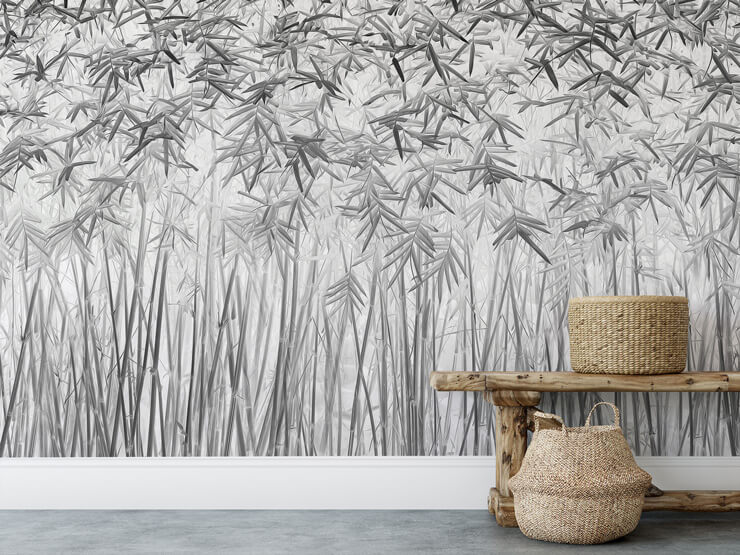
Mural in photo: Parallelism
Above all else, Japandi’s love for nature is a true reflection of our current climate. Our growing love for the outdoors, a need to escape social media and an urge to help our suffering environment, has made us love all things natural and sustainable.
Japandi style has a love for tactile décor with a natural texture that adds warmth and an outdoorsy feel. Sarah Bowen, a UK-based Interior Designer and Founder of Spruce Up, knows the exact materials to use when adopting this style's love for natural materials.
‘Add warmth with natural fibres and sustainable materials. Bamboo, of course, is typically Japanese, while quality fabrics like cashmere and silk will add a touch of Scandinavian 'hygge'.’
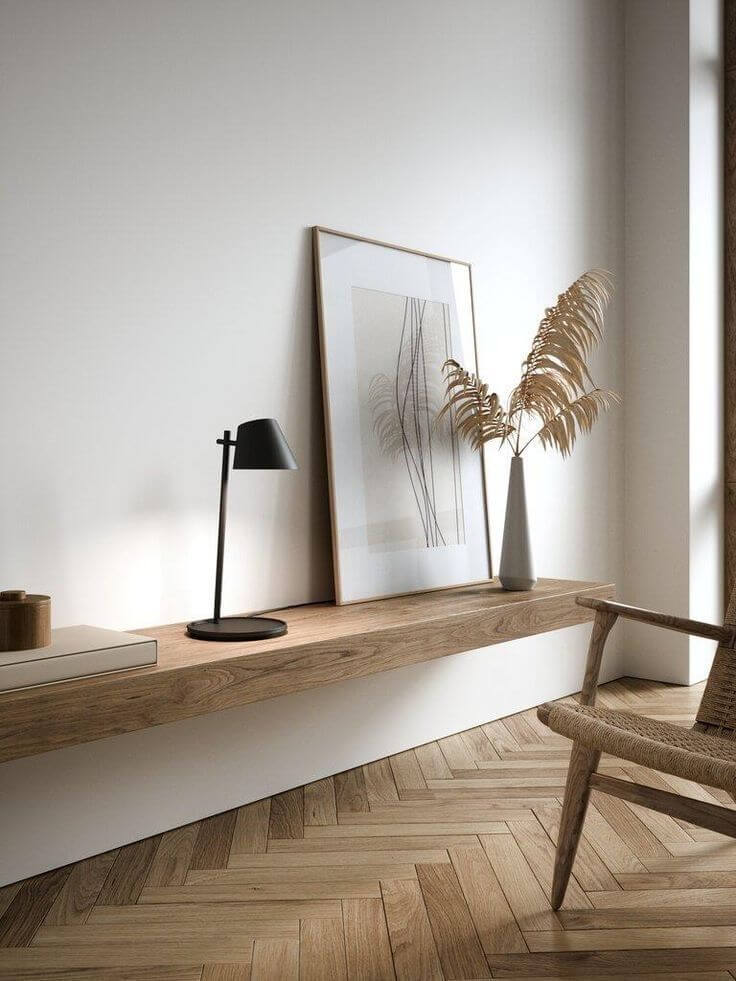
As well as bamboo, cashmere and silk, raw clay ornaments offer a very modern twist on this trend. Choose a clay bowl, plant pots or table lamp stand. Not only clay, Daniel Javor, the CEO of Next Luxury, tells us that wood and wool are a must.
‘Add texture to your room with the use of natural woods and textiles. Lay a woven area rug on the floor. Drape a wool throw blanket over the sofa or accent chair. Place velvet throw pillows on the seating.’
Plants also play a key part in Japandi interior design. Leafy green plants such as monsteras, spider plants or strings of pearls are ideal. Dried options such as pampas grass are also a great choice.
‘Japandi style heavily depends on indoor plants. The style aims to bring the natural elements into your home to achieve an outdoorsy feel. It’s worth noting that you go for quality, not quantity to follow the trend’s strong Zen influences. Place only a couple of tall and sleek plants in the corners but boldly decorate. Make sure to pair your greenery with simple yet elegant pots.’ - Andrew Barker (Founder of HomeownerCosts)
A craving for neutral tones
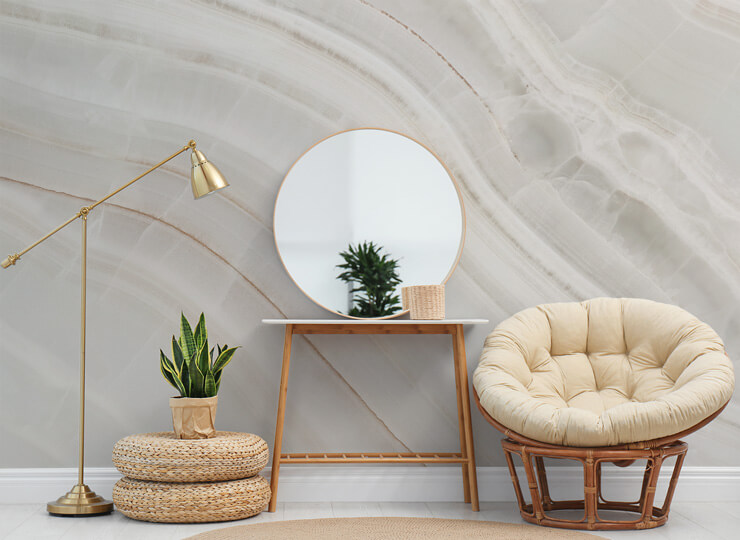
Mural in photo: Marble Texture Background
Although neutral tones are high on the list for Scandinavian Japanese design, it is also a popular choice across the world of interior design.
Both Scandi and Japanese styles celebrate a love for warm, neutral tones. Try to stick to one main colour per room with alternate shades in your choice of décor. This will ensure that they all blend and don’t contrast at all. Jen Stark, Founder of Happy DIY Home, tells us the colours to focus on.
‘Japandi design color schemes feature neutral, muted tones such as beige, taupe, oatmeal, and stone. To incorporate this trend into your home, start with a high-contrast color scheme that features neutrals with small hints of color.’
If oaty shades are not your thing, then greys and blue tones are also ideal when added with wooden furniture. These shades are simple and minimalist, but pairing with wood adds warmth to these cold tones. Even dark brown and olive green shades will look perfect in a Japanese cum Scandinavian home. But, the biggest tip is to avoid bright white. This is far too glaring for Japanese Scandinavian design.
Have you enjoyed our Japandi style advice from the experts? If you want more, why not take a look at our calming oriental wallpapers.





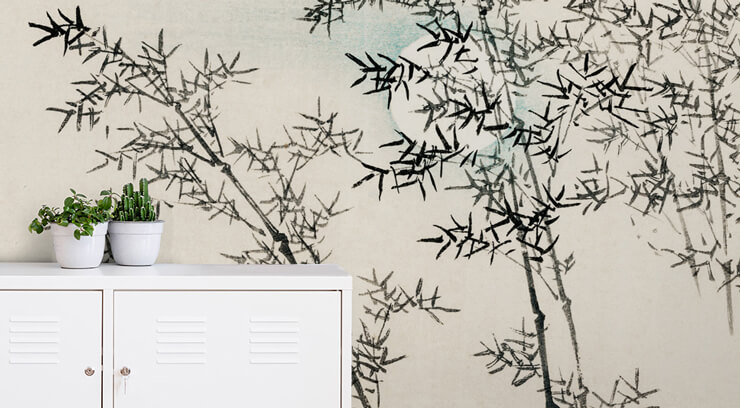
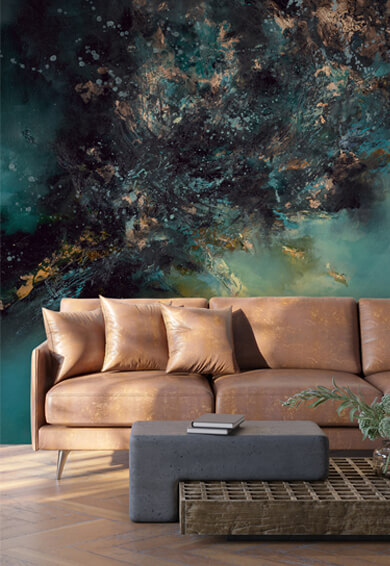

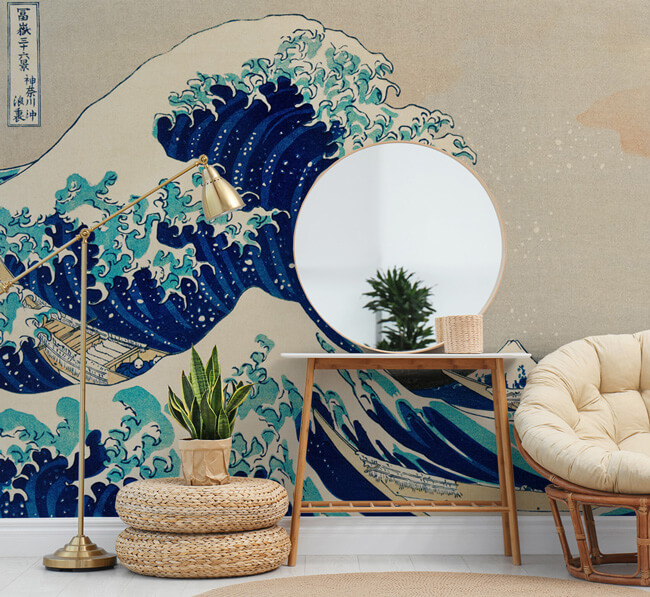
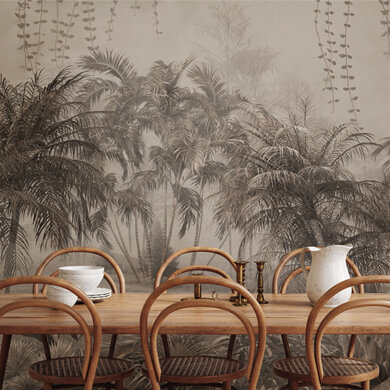
Latest Social